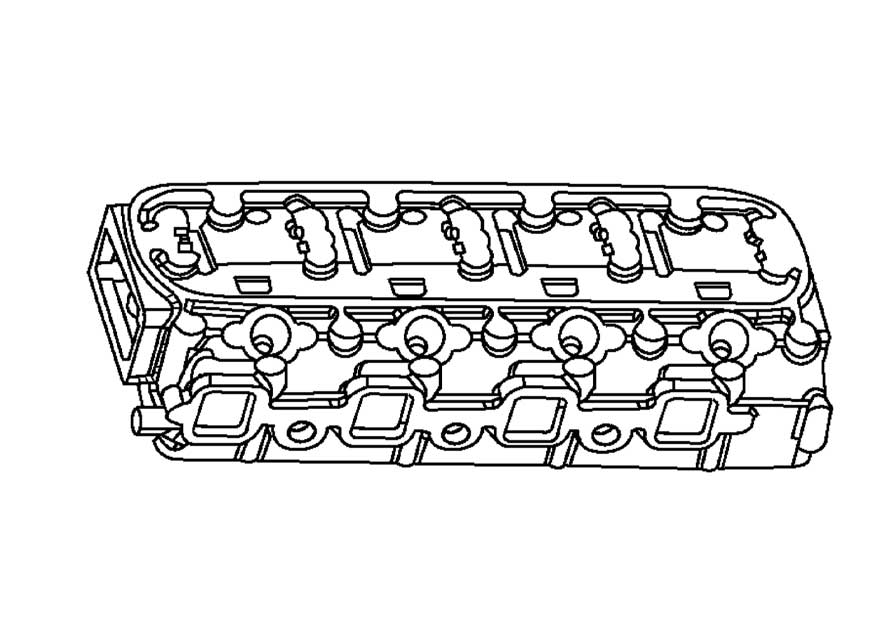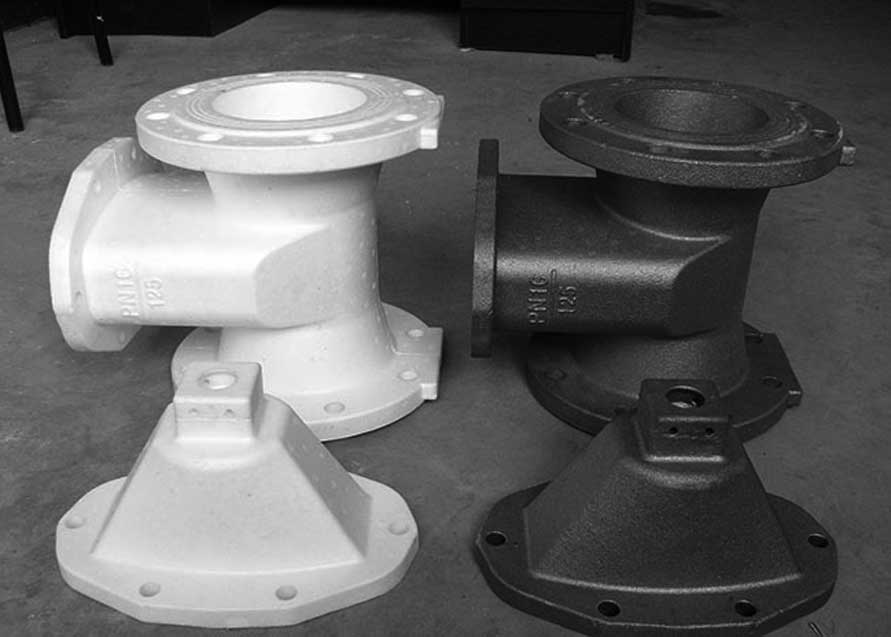Lost foam casting can be divided into self-hardening sand lost foam casting and binderless dry sand lost foam casting according to its mold material. According to the pouring conditions, it can be divided into ordinarily lost foam casting and negative pressure lost foam casting.
4 process classifications of the lost foam casting
- Compared with traditional sand casting, mass-produced lost foam casting has the following process characteristics.
- A foam plastic model that is the same shape as the casting and only differs in size from the shrinkage of the metal remains in the mold to form a “solid” mold instead of the “cavity” mold (that is, “empty mold”) of the traditional sand mold.
- The sand mold is dry quartz sand without binder, moisture, or any additions, or forsterite sand, pearl sand, etc.
- During pouring, the foam plastic model is continuously decomposed and gasified under the action of high-temperature liquid metal, resulting in a metal-model replacement process, unlike traditional “empty mold” casting, which is a filling process of liquid metal. To Make a cast, it is about “disappearing” a Styrofoam model.
The foam plastic model can be molded in blocks and then bonded together. The shape of the model (ie, the shape of the casting) is basically not subject to any restrictions.

26 advantages of the lost foam casting
The lost foam casting process mainly has the following advantages.
- The size and shape of the castings are accurate, the repeatability is good, and it has the characteristics of precision casting
- The surface finish of the casting is high;
- The sand core and core making department are eliminated, and casting defects and waste products caused by core making and core setting are eradicated;
- No case-fitting and no mold-taking, which greatly simplifies the molding process and eliminates casting defects and waste products caused by mold-taking and case-closing;
- Adopting dry sand molding without binder, moisture and any additives, all kinds of casting defects and waste products caused by moisture, additives and binders are eradicated;
- The sand treatment system is greatly simplified, all the molding sand can be reused, and the molding sand preparation department and waste sand treatment department are cancelled;
- Shaking sand is extremely easy, which greatly reduces the workload and labor intensity of sand shaking;
- The casting has no flash and burrs, which reduces the cleaning and grinding workload by more than 50%;
- A reasonable shape of the riser can be set at the ideal position, without being restricted by traditional factors such as parting and mold taking, and the internal defects of the casting are reduced;
- Negative pressure casting is more conducive to the filling and feeding of liquid metal, and improves the structure density of castings;
- Combined casting, multiple pieces in one box, greatly improves the process yield and production efficiency of castings;
- Reduce the processing allowance and reduce the machining cost;
- It is easy to realize mechanized automatic assembly line production, the production line is flexible, and the production of castings of different alloys, shapes and sizes can be realized on one production line;
- The draft angle can be canceled;
- The life of the metal mold used can reach more than 100,000 times, which reduces the maintenance cost of the mold;
- Reduce dust, smoke and noise pollution, greatly improve the working environment of foundry workers, reduce labor intensity, and the industry dominated by male workers can become an industry dominated by female workers;
- The process operation is simplified, and the requirements for workers’ technical proficiency are greatly reduced;
- The shape of the parts is not limited by the traditional casting process, which frees the mechanical design workers to freely design the most ideal casting shape according to the performance of the parts;
- Can reduce casting weight;
- Reduced production costs;
- The factory design is simplified, the investment in fixed assets can be reduced by 30%~40%, the floor area and building area can be reduced by 30%~50%, and the power consumption can be reduced by 10%~20%;
- The lost foam casting process is widely used, not only for cast steel and cast iron, but also for cast copper and cast aluminum;
- The lost foam casting process is not only suitable for castings with simple geometric shapes, but also suitable for castings with multiple open sides, multiple cores, and complex geometric shapes that are difficult to start with ordinary casting;
- The lost foam casting process can realize pouring under the state of micro-vibration, promote the formation of special metallographic structure, and help improve the internal quality of castings;
- Combined pouring in dry sand, sand removal is easy, and the temperature is synchronized, so the waste heat can be used for heat treatment. Especially the water toughening treatment of high manganese steel castings and the solution treatment of heat-resistant steel castings have very ideal effects, which can save a lot of energy and shorten the processing cycle;
- Using the lost foam casting process, castings of any size can be completed according to the melting capacity.
Read More: Lost Foam Casting Wikipedia
